




By Justin Brewster STATESMAN REPORTER
As of this academic school year, there will now be a student-raised labor union at the Logan campus of Utah State University called the United Campus Workers of Utah, or the UCW. This will be the first time a union has been formed on a Utah State campus.
“A labor union is a collective of workers who work together to bargain or come to agreements with their employer to better worker welfare,” said Emily Burgess, a graduate teaching assistant in the biology department and a member of the organizing committee for the union.
“We’re a wall-to-wall union composed of workers all over Utah State’s campus,” said Keegan Waller, adjunct in the English department and member of both the organizing committee and steering committee for the union. “That’s faculty, staff, undergraduate students, workers and graduate students. And it’s a collective aimed at bettering conditions and wages for all workers here on campus.”
The labor union at USU is organized under the Communications Workers of America, or CWA, and is in the same local chapter as the communication workers and hospital workers unions at the University of Utah.
The CWA has helped organize other collegiate unions in other states such as Virginia and Arizona.
“To start this union, our first step was to reach out to them [CWA] and say ‘Hey, we’re interested in starting this higher ed union. Can you supply us with resources to do that?’ And they eagerly responded, ‘Yes.’” Waller said. “Ever since then, we’ve been working with staff organizers
employed by CWA to help us organize within the university ourselves.”
While the USU campus union is a chapter of the broader organization of the CWA, it still maintains a fair amount of autonomy.

“We do contribute financially. Like our dues — some of them goes back to the local level, and some of them go back to the national level,” Burgess said.
At present, the union has both a website where workers can join and an Instagram.
“You fill out a little form that has some of your information: your name, your department, your job and then a way for you to pay dues,” Burgess said.
Dues are an amount of money paid to help keep labor unions running. Burgess stated that the dues structure for the USU union was kept intentionally low at $10 a month to reflect different income levels at USU as well as the cost of living within Logan.
Dues stay low until the union member makes $80,000, as that is considered the living wage for a single parent in Logan. After that point, dues are scaled by percentage.


Justin Brewster is a sophmore currently studying international studies. In his spare time, he enjoys video games and learning about history.
— justin.g.brewster@usu.edu

September 24
- A USUPD officer responded to an injured student at Legacy Fields. The individual was transported for medical attention.
September 25
- Police responded to a suspicious odor in the Big Blue Terrace but did not detect any presence of harmful or illegal odors.
On Spet. 24, an Aggie Alert was sent out reporting a sexual assault on Logan campus. The assault reportedly occured at 8 p.m. in the Logan City Cemetary to a female adult student. The perpatrator was an adult male with a knife. According to the Cache County Police Department, the victim was transported to Cache Valley Speciality Hospital for medical assistance, and the assualt was reported to the Title IX office. For further support and resources please visit usu.edu/sexual-respect.
By Aubrey Holdaway STATESMAN REPORTER
Amidst soaring home prices and limited options pushing people to the brink of displacement, Cache Valley residents gathered in the Logan City Library on Sept. 26 to confront the escalating housing crisis.
The meeting marked the launch of the region’s first YIMBY group, advocating for zoning reform and diverse housing solutions to address the growing shortage as Logan experiences an increasingly dire housing crisis, leaving many residents struggling to find a place to live.
As Sydney Lyman, USUSA student advocate vice president puts it, “Housing in Logan is a nightmare.”
The U.S. Census reported an almost 20% growth in Cache Valley’s population from 2010 to 2020, with more than 85% of that growth being children of current residents.
The Cache County Housing Crisis Task Force released a report in 2023 detailing the crisis.
“We have an extreme shortage of available homes across most socio-economic levels. Here in Cache Valley, less than 25% of households with householders 25 to 45 can afford a home at the average selling price,” the report reads.
To try and create change, residents Josh Smith and Megan Jenkins have launched the region’s first “Yes In My Backyard” organization, or YIMBY.
YIMBY refers to a pro-housing movement that focuses on accessible housing and policy reform.
“It’s very much about adding in variation and different options that are outlawed or only permitted in certain places or in small amounts,” Smith said.
During the Logan chapter of YIMBY’s first meeting at the library, attendees were asked to share their concerns.
One resident said she was trying to find housing for her grandchildren but was unable to find good, affordable options. Another said he had the money and means to buy a home, but the market was too overcrowded for him to win any of his offers. Others expressed disappointment at zoning laws that prevented people from living together or on someone’s property.
The group aims to push local government officials to enact zoning changes to improve conditions and diversify options for different people’s needs.
This includes increasing the number of
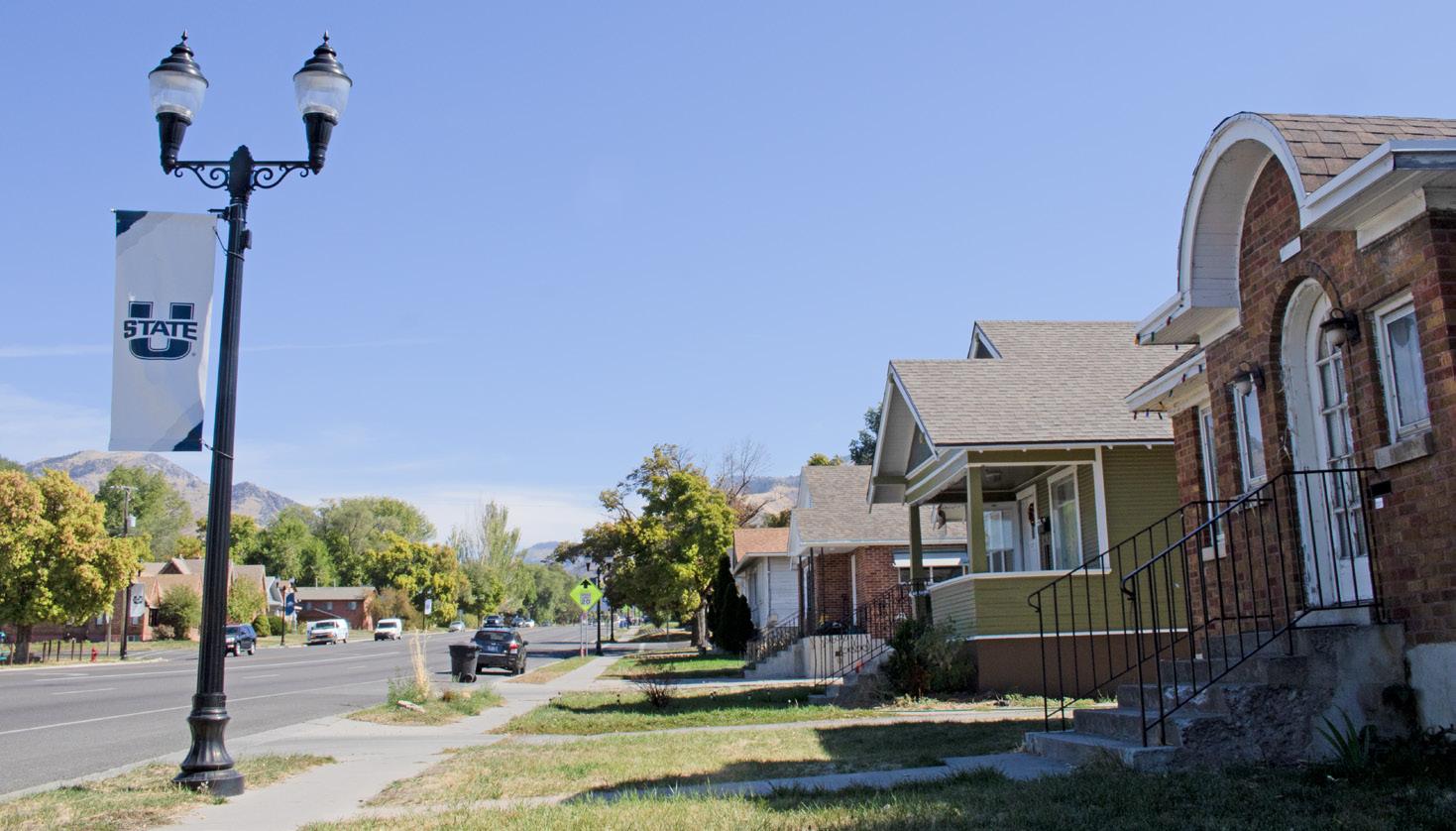
Homes along 400 North as seen on Oct. 3, 2024.
non-related people who can live in one home from three to four, minimizing restrictions on accessory dwelling units and creating various styles of homes.
ADUs are small independent living units on the same property as a single-family dwelling, such as a mother-in-law suite. ADUs aren’t currently allowed from 200 East to 1600 East, 1400 North to Logan River and 300 South.
In a city council meeting on Sept.17, Logan’s director of community development Mike DeSimone spoke on the benefits ADUs could provide if restrictions were reduced.
“ADUs could provide additional housing on existing, developed lots with minimal investment for a variety of residents, whether student or non-student,” DeSimone said.
YIMBY also seeks to create affordable, higher-density housing to provide for students and free space for young families.
“Allowing more duplexes and triplexes by right, instead of requiring special processes, would be really helpful,” Smith said. “We have this existing stock of housing, so we can use it more intensively, add someone to each home, and that’s a big improvement.”
Another important goal for the group is to get more demographic groups involved, such as young families and students. According to Smith, these people are generally underrepresented at city council meetings and in groups like YIMBY.
“It’s not students or people who have jobs and kids right now,” Smith said. “It’s overwhelmingly older people who have often retired, and that means that they represent because they’re often the only voices.”
Although students aren’t the only ones
struggling to find housing, they make up a large part of the demographic.
Lyman attended the first YIMBY meeting and hopes to see more student involvement.
“If students don’t get involved with this, their voices will not be magnified, and the need for apartments that house students will not be heard by local government,” Lyman said.
Many students are forced to pay rent they can barely afford, live in mold-infested apartments or share tiny living spaces with other people.
Although she secured housing months in advance her first year, Lyman still didn’t have much to choose from.
“I was a student who had to sign a waiver that there was lead in the paint on my walls,” Lyman said. “There was mold in the AC unit and the showers.”


Aubrey Holdaway is a senior studying print journalism. You can usually find her bugging Malory in the student media office, drinking a little beverage or lamenting the slow arrival of sweater weather.
— a.holdaway@usu.edu



By Essence Barnes STATESMAN REPORTER
CAPS underwent a change to their official title to promote a new era of campus mental health services. CAPS has transitioned from Counseling and Psychological Services to Counseling and Prevention Services, the change signifying a combination of USU’s mental health and wellness services.
According to Eri Bentley, director of CAPS, the name change came as a result of organizational restructurings under the new USU presidency of Elizabeth Cantwell.
Over the summer, Cantwell released a message highlighting the importance of the university’s organizational restructuring and fostering greater communication and collaboration on campus. The combination of wellness and counseling services aims to reflect those values.
“The wellness services that used to be together with the student health center became under us, as CAPS,” Bentley said. “We are under the same roof now, and we can collaborate more effectively.”
The change from “psychological” to “prevention” is intended to represent a broader scope of services now included under CAPS, rather than only therapy and counseling services.
“We are known as CAPS, so finding something that allows us to keep that well-known acronym and making a minor change to be really descriptive and inclusive of our services made sense to us,” Bentley said.
Drug prevention and nutrition services, once located mainly under student health and wellness services, are now a part of the resources available.
“From a student perspective, nothing really changes much,” Bentley said. “You’re still getting those same ATOD [Alcohol, Tobacco, and Other Drugs] services, you’re still getting those same nutrition services.”
According to Bentley, this organizational change aims to provide better coordination between mental health services and wellness services to make the resources more accessible and immediate for students.
“Communications will get better, and I’m hoping that the impact on students will be better too,” Bentley said.
According to Bentley, these wellness and prevention services are intended to reach a larger audience of students who may not know exactly what service they might need.
“Students don’t need to know if they need nutrition services or individual therapy or group therapy or prevention services,” Bentley said. “They can come to us, and we can easily direct them to the type of services that suit their needs.”
While the general services provided under the CAPS organization restructuring are staying the same, CAPS is hoping to provide a greater variety of wellness and prevention services in the future.
“This is the year for us to be brainstorming where

we can expand and what kind of things we can do,”
Bentley said.
CAPS encourages students to reach out and provide insight into the kinds of services they think could be beneficial.
“We are here for students, and we want to hear from students,” Bentley said. “Any ideas or suggestions students have, we would love to hear about them.”
Jonah Swenson is a clinical case manager at CAPS who helps the program with outreach to make CAPS resources accessible to students.
“This year, we’ve done some different outreach events to drive students to the third floor of the TSC,” Swenson said. “We’ve also made some website changes for students to be able to request an appointment online instead of having to call in.”
These small changes aim to spread the word about the types of help available to students at USU and make the process towards getting help as smooth as possible.
“I think it will be super helpful as this kind of holistic, wellbeing umbrella,” Swenson said. “There’s a lot of us here through different campus resources that are trying to work on mental health for students, and the more communication we can have, I think, is only to the benefit of the students we’re working with.”


Come join Zack as he demonstrates some of his favorite songs from his favorite albums! With over 900 records in his collection, he has plenty of goofy, informative and personal stories about his albums. If you love music from the ‘70s, tune in every Tuesday at 3 p.m. on Aggie Radio 92.3!



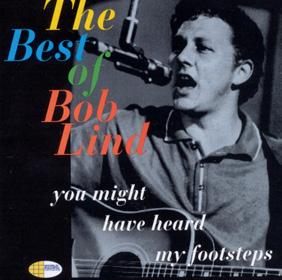
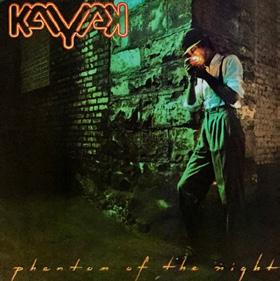








“We have already confirmed a couple pumpkins over 2,000 pounds,” Hall said.
Out of 28 pumpkins, the winning pumpkin was grown by Ralph and Juana Laub, weighing 2,289 pounds.
Hall said the pumpkin broke the state of Utah’s record weight by two pounds.
Ronnette and Mark Anderson are the co-owners of Anderson’s Seed & Garden.
Ronnette Anderson said the event is a great opportunity for pumpkin farmers to come and showcase their giant pumpkins for festival attendees.
“The growers put so much time into growing the pumpkins and to see people that can appreciate it,” Ronnette Anderson said. “They loved it.”
Mark Anderson expressed how much Anderson’s Seed & Garden cares about the growers who bring their pumpkins to this event. He said they try their best to create an entertaining festival.
“Our festival is unique in the fact that we know how hard it is for the growers who are participating in this to grow the pumpkins. So we have made it a really special experience for them,” Mark Anderson said. “We have things going on for the growers to stay engaged since they are the ones that stay all day.”
The giant pumpkins were on display for attendees to see throughout the event.
“We had photo opportunities for our growers as well as photo opportunities for the attendees,” Mark Anderson said.
Hall said last year’s festival was a huge success.
“Last year, we anticipated maybe 2,000 people, and we were blown away by around 20,000 people showing up,” Hall said.
After the success, Anderson’s Seed & Garden was ready for a large turnout this year, with 128 vendors offering food, shopping and activities.
“Everything has increased in volume,” Ronnette Anderson said. “Our vendors have doubled. The activities have more than doubled.”
“It’s a big party with music, movies, food and fun. It’s just a great place to be at a time of year where it’s fun to be outside,” Mark Anderson said. “It’s all about having some fun with your family and with giant pumpkins.”

By Samantha Isaacson STATESMAN REPORTER
Center Street was buzzing with energy at the 2024 Pumpkin Festival. Anderson’s Seed & Garden hosted the Giant Pumpkin Festival for the second year on Sept. 28.
The festival was all about giant pumpkins, and the main event was the giant pumpkin weigh-off. Last year’s competition had 20 pumpkins entered, the winning pumpkin being 1,784 pounds.
David Hall is the manager at Anderson’s Seed & Garden.
In preparation for this event, Hall found a few pumpkins were ready to shatter last year’s record.
The festival had activities for all ages, with food trucks, a vendor market, face painting, local art, pumpkin carving stations, pumpkin decorating, a family scavenger hunt, a beer garden, the giant pumpkin weigh-off and more.
“We created an event that lets you spend the whole day doing something, hitting all the activities that we’ve created,” Ronnette Anderson said. “It is very family-oriented.”
Anderson’s Seed & Garden plans to continue the event next year.
“It motivates us to be able to do something that can bring the community together,” Ronnette Anderson said. “Bringing the community has such a better payout for us versus being a business owner.”
Next year’s festival will be hosted on Center Street on Sept. 27, 2025.

spend time outdoors.
— a02346802@usu.edu

By Landri LaJeunesse STATESMAN REPORTER
Spectators from around the state filled the Cache County Fairground bleachers this Friday and Saturday night for Utah State University’s Fall Stampede Rodeo. Hosted by the USU Rodeo Team, the event brought riders from the Rocky Mountain Region to showcase their skills in events like bull riding, tie-down roping and barrel racing.
For third-year USU barrel racer Madison Knepp, the rodeo was also an opportunity to have a good time.
“My favorite part about competing is being out there and just soaking it all up,” Knepp said.
Knepp has been riding since she was four years old and barrel racing since she was eight. For her, rodeo isn’t just a chance to compete — it’s a chance to inspire.
“I love riding around and seeing all the little girls just light up and want to do what I do,” Knepp said.
According to spectator and first-year student Annie Schellenberg, the crowd also felt this energy. She described the event as “hype” and commented on the smaller details, including the clothes.
“Everyone is dressed up in the fun cow outfits,” Schellenberg said. “It’s been fun.”
While the crowd was well-dressed, the team was wellto-do.
According to the National Intercollegiate Rodeo Association, first-year USU team ropers Daniel Philips and Lyric Estrada took second in the long go with a 7.4-second run. They also placed first in the short go with a six-second run, winning them the average in team roping.
The NIRA also reports that third-year USU barrel racer Brooke Morris won the long go with a 17.57-second run. She ended up sixth overall in the average.
According to rodeo coach Colton Bair, first-year Chantry Bracket of USU also made the standings, tying with Maklee Larson of USU Eastern in breakaway roping.
Utah State University ended up third overall with the men’s team and seventh with the women’s team.
However, Knepp believes there is more to the sport than competition. With events like the USU stampede, she thinks college rodeo helps keep the sport and her faith alive.
“It’s amazing to see what people used to do and to be able to turn it into a sport,” Knepp said. “And to be able to keep God in it, too.”
For Knepp, the rodeo is not just a sport but a platform to uphold religious and patriotic elements in the community


and everyday life, fostering a sense of respect and reverence among the audience.
“We are losing God in so many things,” Knepp said. “We still pray before every rodeo, and I think that’s important.”
According to Knepp, she is not the only one who feels this way.
“Everyone recognizes that,” Knepp said. “It helps keep it alive.”
Those who watch and support rodeo also help spread awareness about the sport. Last weekend, the crowd was animated and loud, and the announcers maintained a high energy about the arena.
According to Schellenberg, the environment was one of the best parts.
“It’s fun that you can cheer with and meet new people,” Schellenberg said. “It’s just a fun atmosphere.”
Schellenberg also supports the team by being enthusiastic about her favorite events.
“I love steer wrestling,” Schellenberg said. “It’s so satisfying to watch.”
However, Knepp knows it’s not just the loud crowd or steer wrestling that keeps people returning — the promise that the rodeo will persevere.
“It’s a way of life that’s dying,” Knepp said. “Being able to keep that old school western way of life alive is amazing.”
The USU Rodeo team finished the fall season at Utah State University Eastern on Oct. 4-5.

Landri LaJeunesse is a junior studying journalism and communications with a minor in yoga studies. Catch her radio show RADIO ESPRESSO Wednesdays at 10 a.m.
— landri.lajeunesse@usu.edu

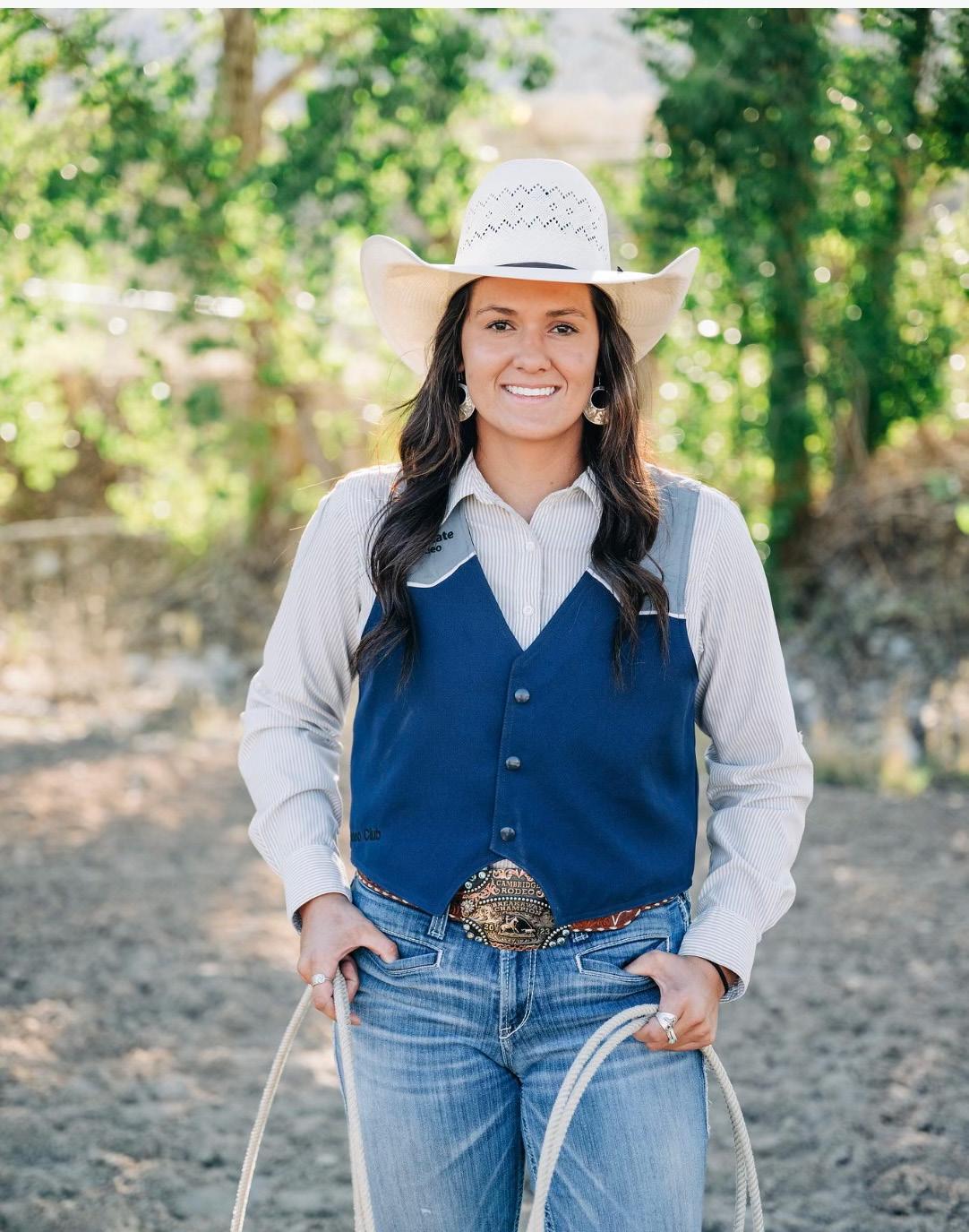
By Landri LaJeunesse STATESMAN REPORTER
Cassity Gluch is a third-year Utah State University Rodeo Club member, but before she conquered the arena in breakaway roping, team roping and barrel racing, she grew up on a ranch in Jordan Valley, Oregon.
Learning to ride when she was three years old, Gluch grew to love ranch life. From early mornings to long nights, she didn’t shy away from hard work.
“She has been driving a tractor since she was big enough to drive a tractor,” said Doug Rutan, family friend and neighbor.
According to Rutan, Gluch helped her family stack hay and take care of the animals. When it came to following her dream to rodeo, he wasn’t surprised to see the same dedication.
“She’s able to think on her own, problem solve and find a solution,” Rutan said. “An all-around, get it done kind of person.”
Rutan has known Gluch her whole life, living just down the street from her family. From branding cattle to participating in school sports, Rutan watched Gluch and her ambition grow over the years.
With her family and Rutan’s, Gluch went to a junior rodeo two or three weekends a month.
“Cassity would enter anything,” Rutan said. “She would enter the steer riding just in case she could win the allaround.”
She also played volleyball and basketball, showed in FFA and participated in jackpots when she was younger.
“If you could sign up for it, I was in it,” Gluch said. “Everybody wanted to support you.”
She believes support from her family and friends was the only way she could move five and a half hours away
Cassity would enter anything. She would enter the steer riding just in case she could win the allaround. — Doug Rutan

from home to go to USU and be a part of the rodeo team, a decision, she thinks, that comes from the opportunity for hands-on learning.
“It’s not just reading books,” Gluch said. “This was the closest place I could go that wasn’t just agribusiness or range management.”
USU also provides Gluch with a community that shares her passion and dedication to rodeo. To Gluch, they are also family.
“The ag program is a pretty close-knit group — just gives you family here,” Gluch said.
However, practicing for the College National Finals Rodeo isn’t the only thing they do together. Since Gluch loves to cook, the team eats together, too.
“After practice, my favorite thing to do is cook,” Gluch said. “Everyone comes over, and we have dinner and hang out and tell big stories.”
Gluch feels at home among her teammates from “home-cooked-meal” families like her own, including her coaches, Colton and Hilary Bair.
“Colton and Hilary are the best,” Gluch said. “I’ve been offered to rodeo at a lot of different places, but those two give everything they have to us for little to nothing in return.”
Being so far from home, Gluch is grateful for the Bairs’ support.
“We can always go to their house and practice,” Gluch said. “They become that second set of parents that’s nice to have when you’re in college.”
For Gluch, that support is vital in a “dying industry.” According to Marketplace, rodeo as a sport has been declining since the ‘90s.
“If it isn’t dying out because of money, it’s from other things,” Gluch said. “Just keeping it alive is a passion.”
Gluch thinks there are many reasons that rodeo is dying out along with funding. According to Utah State, the Rodeo Club at USU is not a part of the official athletics department, meaning it is mainly funded and operated by students.
In addition, Gluch and her teammates must pay and attend school full-time to be part of the team.
“People call it a hobby, but I don’t feel like it is,” Gluch said. “It’s a job, especially in college.”
But Gluch has another job. To pay for school, she focuses on what she is most passionate about — training.
“I really enjoy the training side, making the young horses. That is the fun part,” Gluch said. “That’s how I pay for school.”
By “making,” Gluch purchases young horses, breaks them, trains them to be roping horses and then sells them for a profit.
“It is not the easiest,” Rutan said. “She does a really
good job with young horses.”
But just like her attitude growing up, Gluch believes it comes down to dedication and hard work.
“It really is just the passion,” Gluch said. “If I’m gonna do it, I’m gonna be good at it.”
According to the 2024-2025 Rocky Mountain Region Standings, Gluch is currently tenth in team roping and thirteenth in breakaway roping, with a few rodeos left to score some points.
However, Gluch won’t be taking her hard work all the way to the National Finals Rodeo. This is her last year doing college rodeo. With prospects of training young horses and getting married, Gluch is moving on to new opportunities.
According to Rutan, there isn’t anything that will stop Gluch from accomplishing her goals.
“It doesn’t matter if it’s sports or work or extracurriculars,” Rutan said. “It really doesn’t matter, she’s very willing to do whatever needs to be done and get it accomplished.”
However, Gluch won’t be giving up her passion for rodeo anytime soon.
“It’s the passion that drives you,” Gluch said. “Something brings a little happiness and fulfillment to your life.”
— landri.lajeunesse@usu.edu
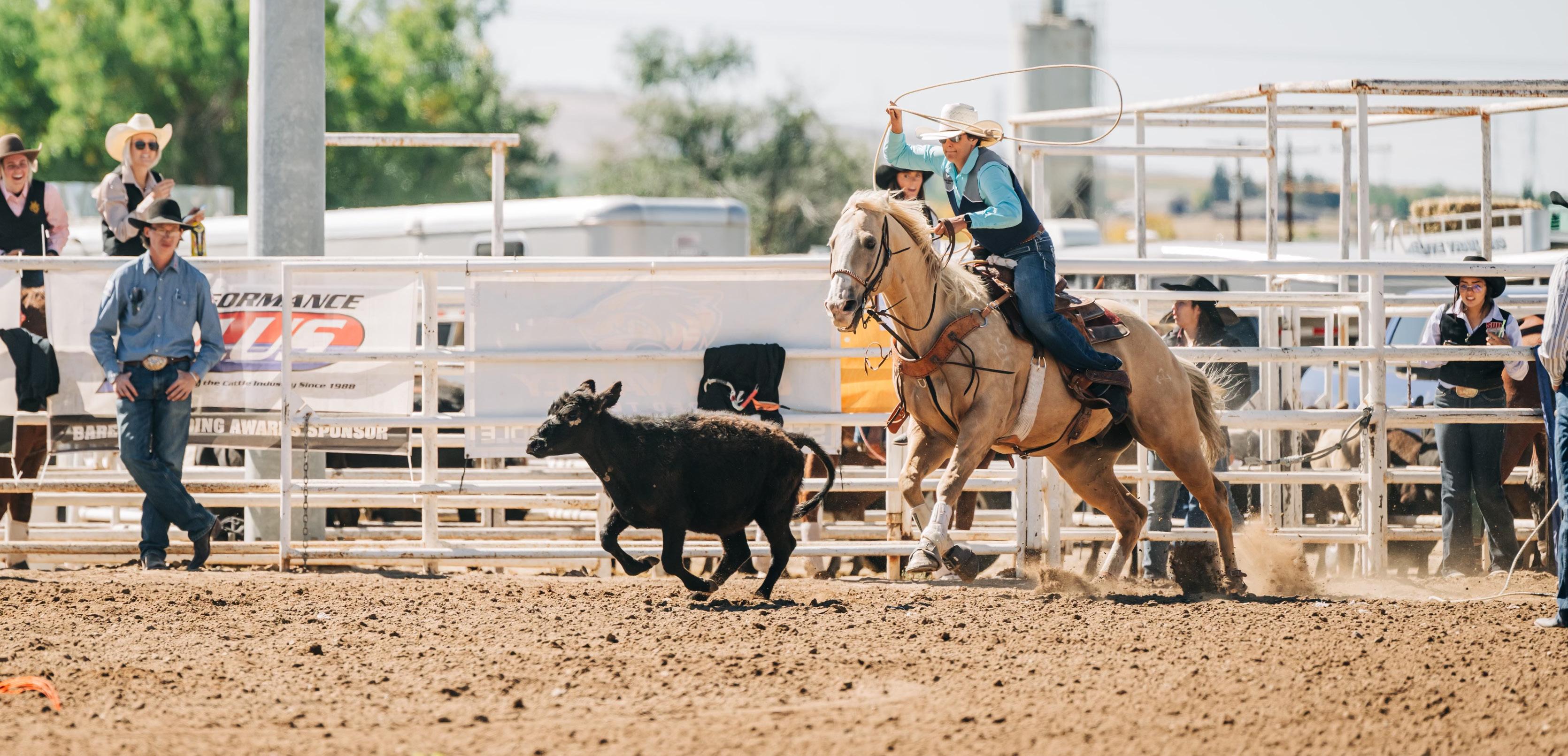

Southern Utah University: Sept. 6-7
Idaho State University: Sept. 13-14
Colorado Northwestern Community College: Sept. 20-21
Utah State University: Sept. 27-28
Utah State University Eastern: Oct. 4-5

Roster
Men’s team:
Ian Livingstone
Payt Goodey
Blaze Klingler
Daniel Estrada
Zane Brackett
Lyric Phillips
Women’s team:
Cassity Gluch
Grace Wittstrom
Brooke Morris
Madison Rockwell
Karina Coombs
Chantry Brackett
Searra Brandt
Grace Lowe
Madison Knepp
Elly Spencer
Kiwi Collier
Natalia Capote
Alexis Beckstead
Ashley Bartschi
Eva Wathen
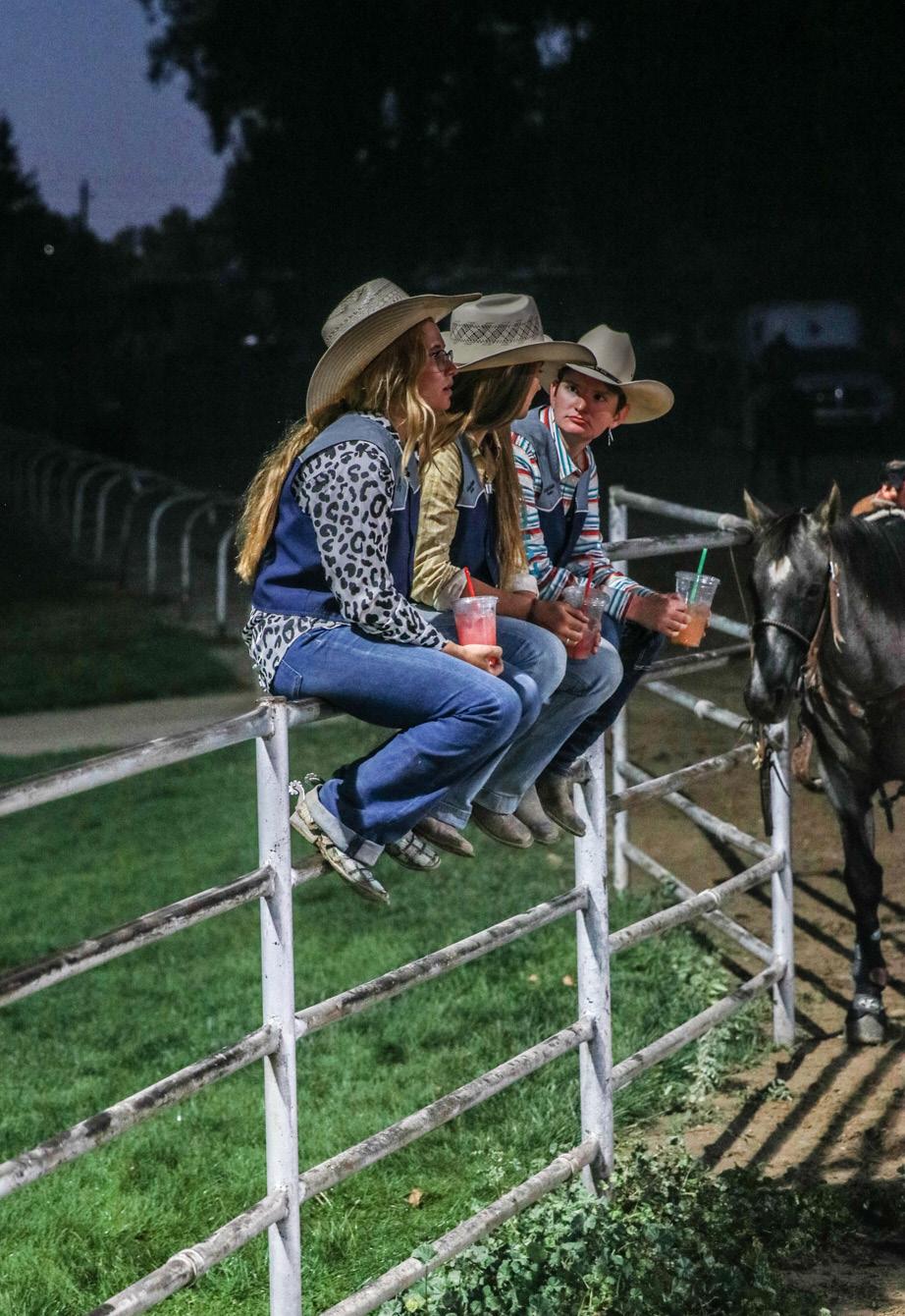

By Lacey Cintron STATESMAN REPORTER
Adventure-seekers and nature-lovers traveled to the City of Rocks for a weekend of rock-climbing, camping and traversing the areas towering granite spires on Oct. 6.
The Wild Women City of Rocks Climbing and Camping trip is geared specifically towards creating an inclusive, welcoming environment for anybody interested in rock-climbing or just looking to explore nature and make new friends.
Lucy Hankins is the student trips manager for the Outdoor Programs and was a trip leader. Hankins has been with Outdoor Programs since 2022, traveling to City of Rocks and other destinations for two years.
“We’re spending two nights at City of Rocks,” Hankins said. “We’ll go climb and teach participants climbing techniques. It’s an awesome opportunity for students to get out in these areas and get introduced to new sports and to do that in a safer and inclusive environment.”
City of Rocks National Preserve is located 100 miles north of Logan in Almo, Idaho. City of Rocks is true to its namesake. The region is well-known for its granite monoliths interspersed with sparse vegetation. The area is popular among climbers because of these granite formations, which offer over 700 climbing routes, views and naturally textured rock suited to climbing.
“The City of Rocks has these odd formations of rocks just coming straight out of the ground in different sizes and shapes,” Hankins said. “It was discovered as a climbing area.”
The wide variety of routes allows for climbers of all abilities to find an experience best suited to them. According to the National Park Service, routes within City
of Rocks can range anywhere from relatively easy to extremely difficult.
The group welcomes anybody who is interested, regardless of climbing experience.
“Anybody can come,” Hankins said. “Generally, we get beginners who haven’t done a whole lot of climbing or who have only bouldered inside. But if folks have experience, that is totally cool too — we can teach them a little bit more.
It’s just more of a fun time climbing with friends.”
The trip is specifically tailored to those identifying as a woman.
“I like that we have the opportunity to offer trips tailored and specific to those who identify as women and cultivate that kind of community at Utah State,” Hankins said.


Lacey Cintron is majoring in psychology. She loves learning about the human mind, sharing stories and naps. — a02388032@usu.edu






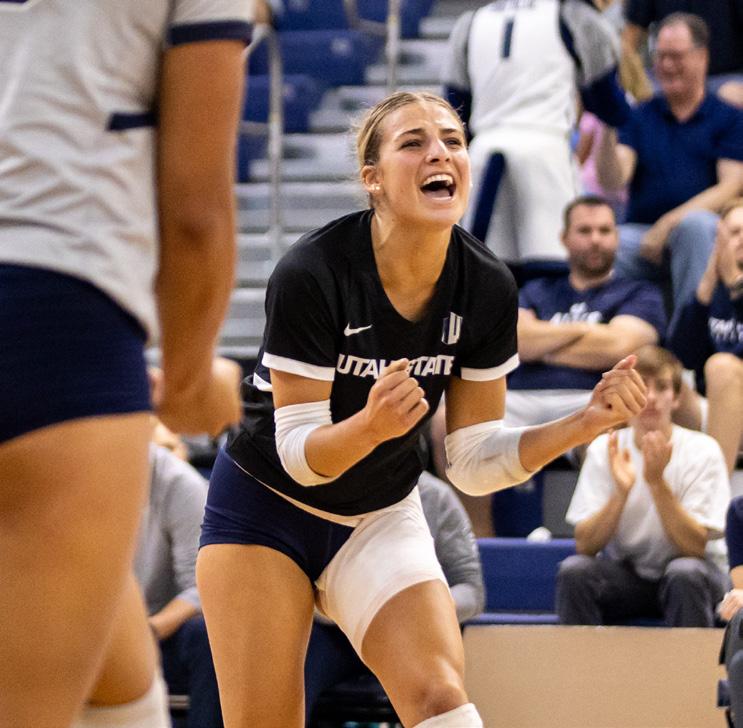






By Landri LaJeunesse STATESMAN REPORTER
Last night, I dreamt I went to Manderley again.”
This is the timeless opening line of one of my favorite fall reads: “Rebecca” by Daphne du Maurier. Published in 1938, this English novel sold nearly 2.8 million copies between the years 1938 and 1965, according to Suntup Editions. Since then, it has not once been out of print. This novel is one I go back to time and time again. It is a book I can never put down and a recommendation I always make to new and experienced readers. It is also a story that begins in the city of Monte Carlo.
While on holiday, a young woman catches the eyes of the wealthy and single Maxim de Winter. Not only a powerful and wealthy man, Winter is also the owner of Manderley, a lavish estate on the Cornish coast.
Swept up in an abrupt romance, the unnamed narrator is whisked away to the dark, coastal estate. However, what she finds there is far from what she was promised on the coast
of Monte Carlo. She is now tasked with taking care of the house and working with the insufferable head housekeeper Mrs. Danvers. However, her ornery maid is not her only concern.
She is haunted, not only by the long, lonely halls of her new home and her husband’s emerging past, but by the memory of a mysterious woman known only as Rebecca.
It is a novel of dark seasides and bottled memories and a story of love as it connects with mystery.
I was first introduced to this novel by a friend in high school who very much reminded me of a Jane Austen novel. She lived in a cottage that featured old oil paintings of proper women on dark green walls, and she spent most of her extra time playing the violin or working at the local library.

When I told her “The Great Gatsby” was my favorite novel, she suggested I pick up du Maurier’s “Rebecca.” Doing so was a decision I have not regretted.
Once I quickly finished the novel and gave her back the copy she let me borrow, we both had the same reaction, which was something along the lines of, “I know, right?” Since then, I have continuously recommended this novel with great enthusiasm and my Jane Austen friend in mind. What stands out to me about “Rebecca” is its lure of the unknown. Most suspense books keep you on the edge of your seat only momentarily or leave you questioning the artistic choices of the author, but “Rebecca” did not disappoint. This nail-biting novel has the shock factor and contains even greater depth within its dark twists. The narrative is chilling, and the main character doesn’t lack her own mystery. As she is haunted in her new life, the reader questions the validity of her storytelling abilities. Throughout the novel, I didn’t know who to believe or who to trust, which placed me in line with the main character’s experience. I was consumed by my need for answers, which left me in a mad haste to get to the next chapter.
However, it’s not just the unknown female lead who leaves the audience guessing. All of du Maurier’s characters have profound personalities and presence within this novel, and they work together to drain the reader of their sanity. The experience results in a book of slow burn at a fast pace, horror without the gore and tragedy with a satisfying ending.
“Rebecca” encapsulates the yearning of “Pride and Prejudice,” the thrill of “The Haunting of Hill House” and the glamor of “The Great Gatsby.” It is a novel of suspense, romance and
— Landri LaJeunesse
discovery, and it has the power to transport its reader to the dark seaside of the English coast and keep them there, turning page after page.
Du Maurier’s female lead describes the feeling quite fantastically, saying, “If only there could be an invention that bottled up a memory, like scent. And it never faded, and it never got stale. And then, when one wanted it, the bottle could be uncorked, and it would be like living the moment all over again.”
To me, “Rebecca” is that invention. Every time I read du Maurier’s tale, I am taken away to a time and a place I can only remember when I open up the pages of my annotated copy again and again. It is a novel of dark seasides and bottled memories and a story of love as it connects with mystery.
I invite you as a reader to decide if you want to remain on the surface of du Maurier’s world or dive into the depths of a story so mesmerizing, you won’t ever be able to put the cork back in the bottle.
“Rebecca” has also been adapted to film twice, once in 1939 with du Maurier as the lead and again in 2020 as a Netflix original starring Lily James.

Landri LaJeunesse is a junior studying journalism and communications with a minor in yoga studies. Catch her radio show RADIO ESPRESSO Wednesdays at 10 a.m. - landri.lajeunesse@usu.edu




Birth Control Emergency Contraception PrEP
STI Testing & Treatment Pregnancy Testing & Planning
UTI, Yeast Infections, & Other Concerns HPV & Hepatitis B Vaccines
Wellness Exams & Preventive Care


